Capture the essence of these cunning canines with our fun coyote coloring pages that offer a unique opportunity to immerse yourself in the natural world. Whether you’re an avid artist, a curious observer, or simply looking for a relaxing activity, these pages provide a window into the captivating world of these North American icons. Join us as we embark on a journey through creativity, learning, and nature, one coloring page at a time.
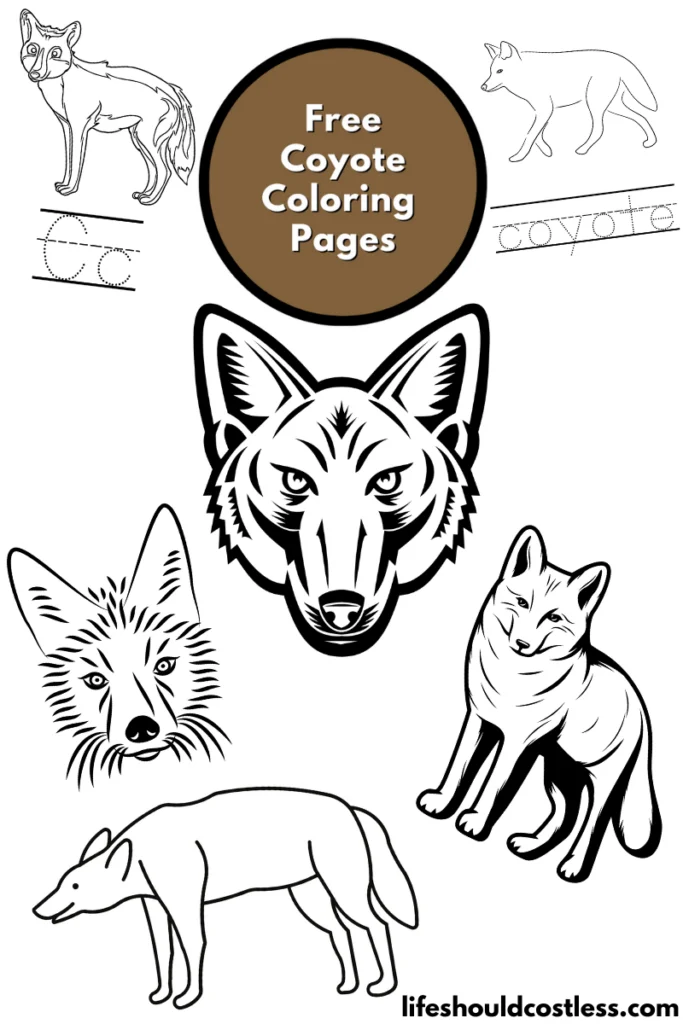
Please don’t hesitate to pick any design that piques your interest. Just select your preferred template, download the free PDF, print it out, and let your creative coloring talents run wild without boundaries.
These templates can also double as helpful guides for embroidery or serve as a wellspring of inspiration for crafting intricate, fine-line tattoos.
Your creative potential is boundless, limited only by the expanse of your imagination.
Table of Contents, Skip Ahead To What You're Looking For
Coyote facts
If you’re new to my coloring pages, it’s worth noting that I take pleasure in offering you the chance to deeply engage with the subject matter.
This allows you to effortlessly turn your coloring experience into an enriching educational adventure. With that in mind, let’s get started!
Here are lots of fun and interesting, simplified, facts about coyotes:
- Adaptability: Coyotes are incredibly adaptable animals. They can be found in a variety of habitats, from deserts and grasslands to forests and urban areas. This adaptability has contributed to their success as a species.
- Range: Coyotes are native to North America, but they have expanded their range significantly in recent years. They can now be found throughout North and Central America, from Alaska to Panama.
- Appearance: Coyotes are often mistaken for domestic dogs, but they have some distinctive features. They are typically smaller than wolves, with a slender build, pointed ears, and a bushy tail.
- Vocalizations: Coyotes are known for their vocalizations, which include howling, yipping, and barking. These sounds serve various purposes, such as communication with other coyotes, marking territory, and coordinating hunts.
- Social Structure: Coyotes are generally solitary animals, but they can form family groups. A typical coyote family consists of a mated pair and their offspring. These families work together to hunt and raise their young.
- Diet: Coyotes are opportunistic eaters and have a varied diet. They primarily consume small mammals like rodents, rabbits, and squirrels, but they are also known to eat birds, insects, fruit, and even carrion.
- Hunting Strategy: Coyotes are skilled hunters. They often work in pairs or small groups to pursue prey. They use tactics like chasing prey into ambushes and taking advantage of their speed and stamina.
- Scent Marking: Like many canids, coyotes use scent marking to communicate with each other. They have scent glands located on their paws and use urine to mark their territory.
- Breeding Season: Coyotes typically mate in late winter, and the gestation period for females is about 60-63 days. They give birth to litters of usually 5 to 7 pups.
- Hybridization: Coyotes can interbreed with domestic dogs, resulting in hybrid animals known as “coydogs.” However, this is relatively rare in the wild.
- Nocturnal Behavior: Coyotes are primarily crepuscular and nocturnal, meaning they are most active during dawn and dusk. This behavior helps them avoid human encounters.
- Intelligence: Coyotes are known for their intelligence and problem-solving abilities. They can adapt to changing environments and are quick learners.
- Cultural Significance: Coyotes hold a special place in the folklore and mythology of many Native American tribes. They are often portrayed as clever and cunning tricksters.
- Role in Ecosystems: Coyotes play a crucial role in ecosystems by helping to control populations of small mammals, which can have a cascading effect on plant communities.
- Conservation Status: Coyotes are not currently listed as a threatened or endangered species. Their adaptability and wide distribution have helped them thrive in various environments.
These facts illustrate the remarkable nature of coyotes and their importance in the natural world.
They are truly remarkable and resilient animals.
We learned lots about coyotes, but there’s much know to know.
If you would like to read more about them, here are some other reputable resources to check out.:
- https://en.wikipedia.org/wiki/Coyote
- https://kids.nationalgeographic.com/animals/mammals/facts/coyote
- https://www.mass.gov/info-details/learn-about-coyotes
- https://kids.britannica.com/kids/article/coyote/353008
- https://a-z-animals.com/blog/10-incredible-coyote-facts/
- To see all of my free printables, go here.
- If you would like to see an alphabetized index of free printable coloring pages, go here!
- All of my animals coloring pages are found here.
- Or, my other mammals coloring pages can be found here.
Printing instructions
*Keep in mind that while these coloring sheets are free, they are for personal use only. Any additional use will need written permission, from me, obtained via email. Thanks.*

How to get best results with your coyote printable
Learn all about coyotes as you color. From writing practice worksheets to various designs, there are coyote coloring options for everyone.
Materials
- Black Ink/Toner
- Standard 8.5"x11" Printing Paper (or quality cardstock)
Tools
- Printer
- Computer/ Phone/ Or Tablet To Download To
- Colored Pencils
- Pencil Sharpener
- Eraser (optional)
Instructions
-
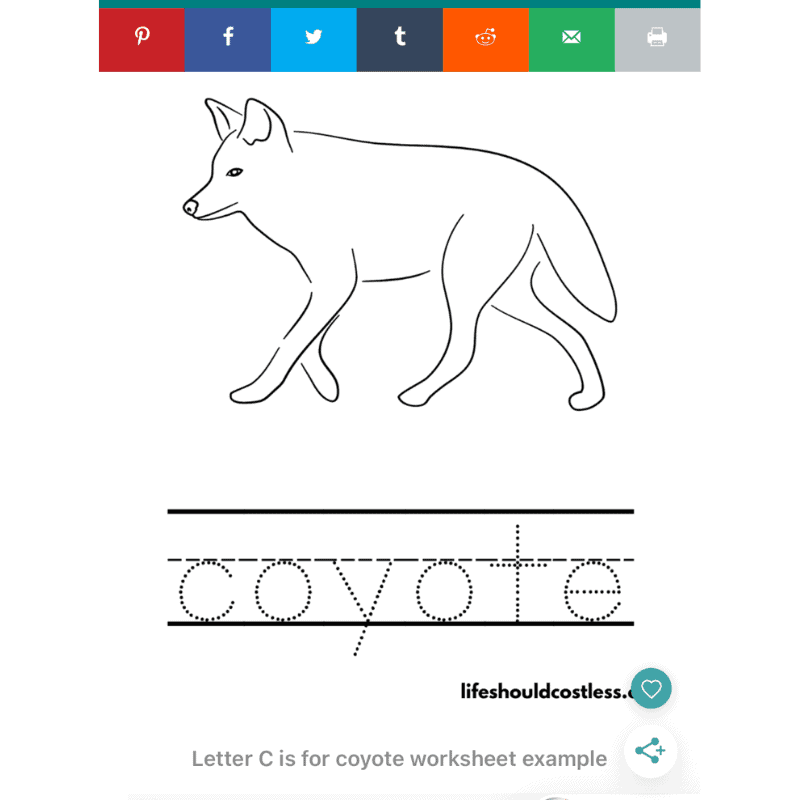 Browse through the assortment of coloring page choices and pick the image or images you would like to color. The sample image(s) presented here, with the website's watermark visible at the bottom, offer you an idea of what the full PDF image will look like.
Browse through the assortment of coloring page choices and pick the image or images you would like to color. The sample image(s) presented here, with the website's watermark visible at the bottom, offer you an idea of what the full PDF image will look like. -
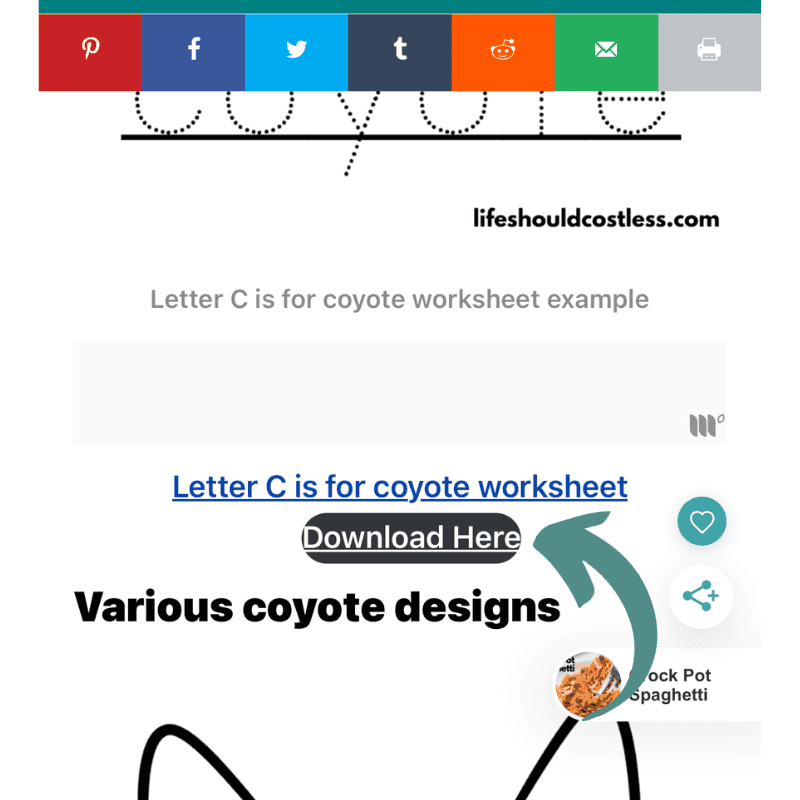 Look slightly below the desired sample image to find the "download here" button for the attached PDF file.
Look slightly below the desired sample image to find the "download here" button for the attached PDF file. -
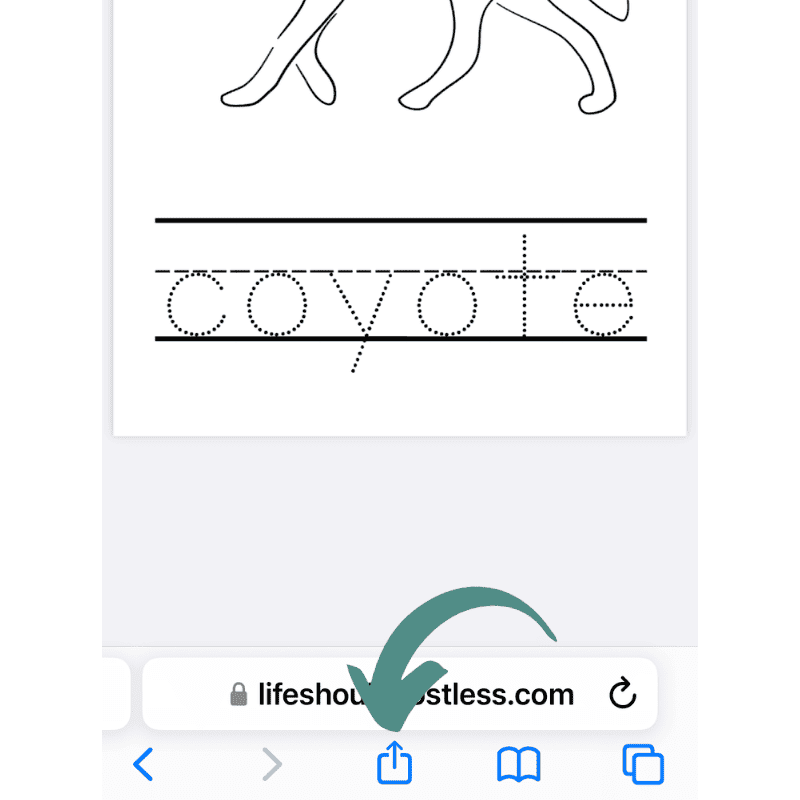
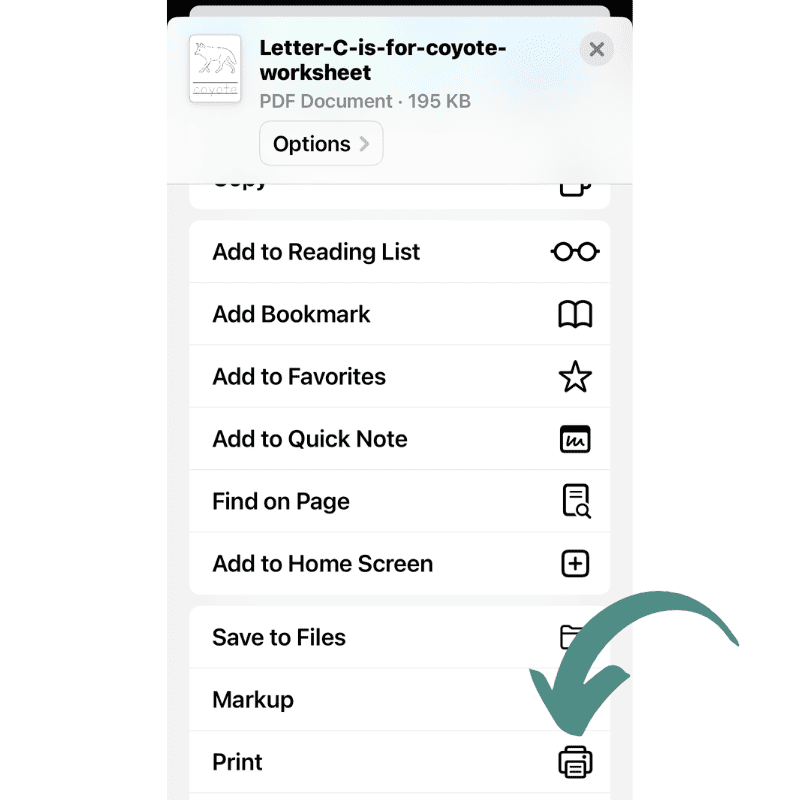 First select download, and then select print.
First select download, and then select print. -
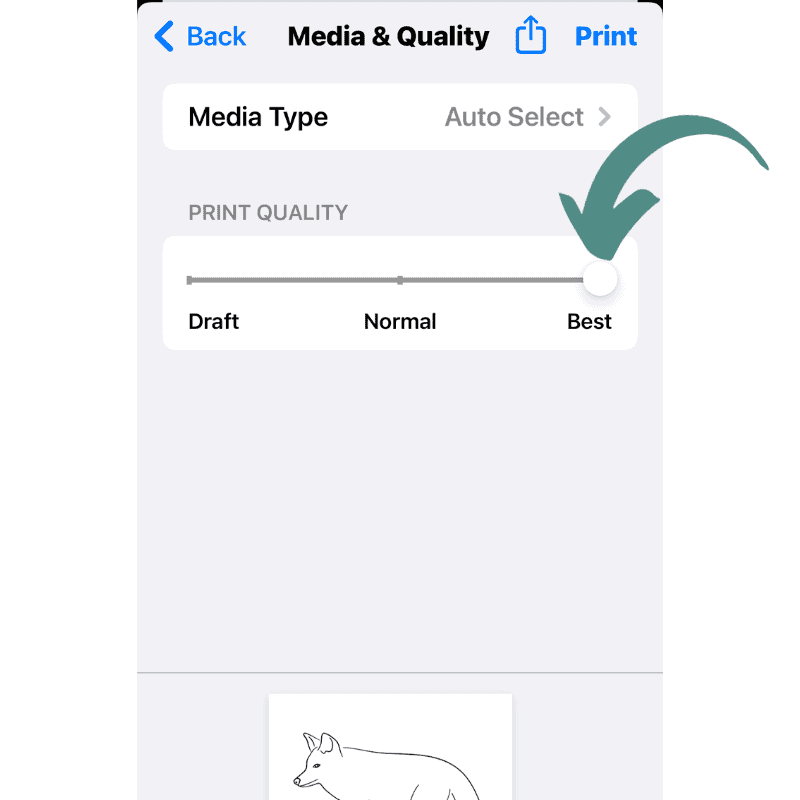 When you're ready to print it out, make sure that you select the highest-quality print setting available.
When you're ready to print it out, make sure that you select the highest-quality print setting available. -
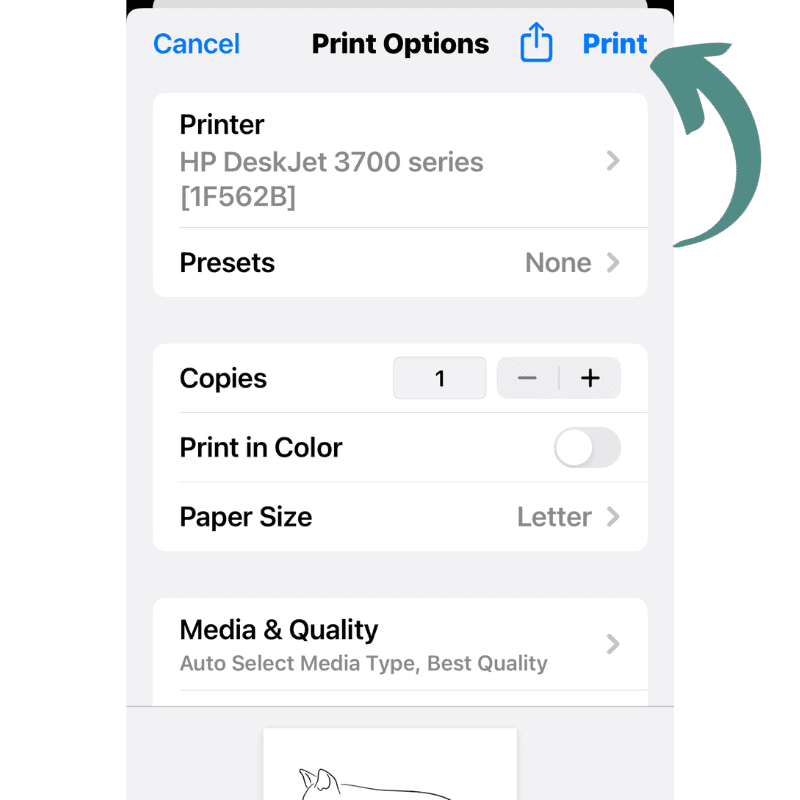 Now select "print" and send it to your printer of choice.
Now select "print" and send it to your printer of choice. 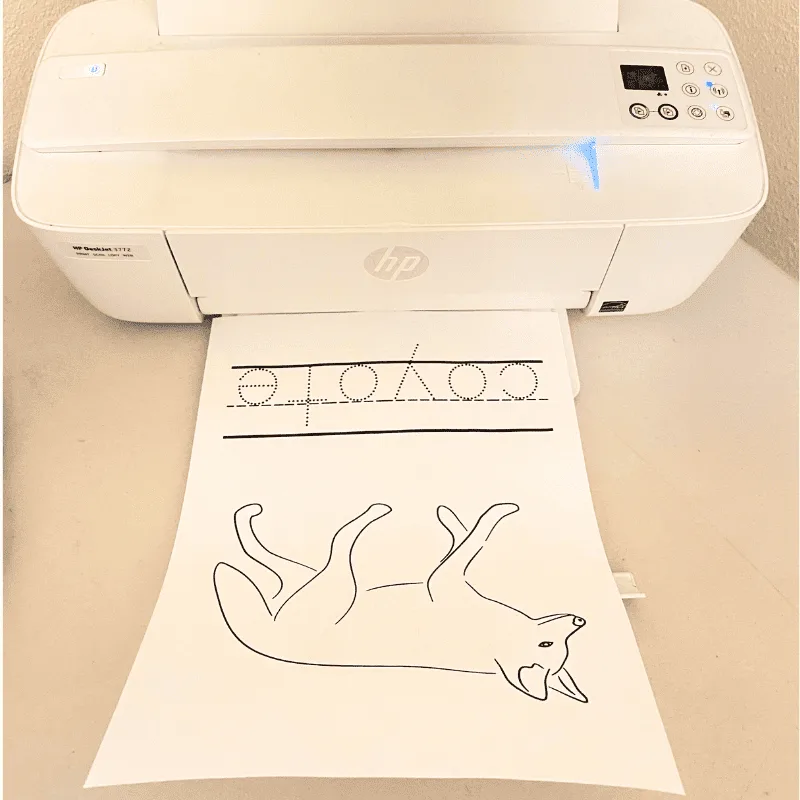 Once you have finished printing out your coloring sheet(s), give the ink a few minutes to fully dry while it's still on the printer tray. This extra step will prevent any ink from smudging on your coloring page, which can be especially important if you plan to give your artwork to special someone.
Once you have finished printing out your coloring sheet(s), give the ink a few minutes to fully dry while it's still on the printer tray. This extra step will prevent any ink from smudging on your coloring page, which can be especially important if you plan to give your artwork to special someone.-
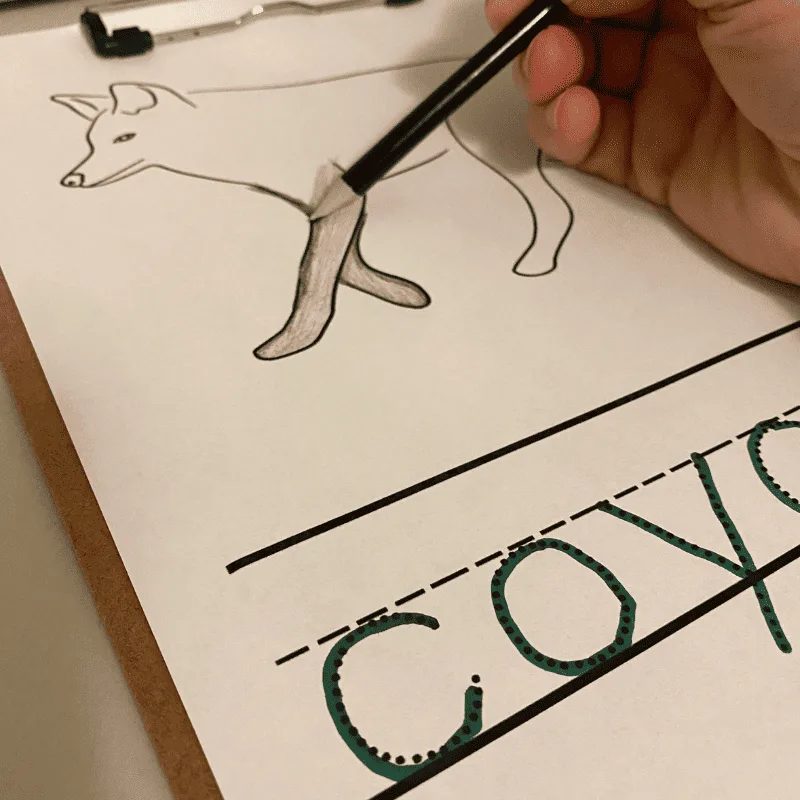 Before you begin coloring, please make sure your hands are washed well and completely dried. Next, find a clean, level surface on which to place your paper, and then let your imagination run free as you color up a storm.
Before you begin coloring, please make sure your hands are washed well and completely dried. Next, find a clean, level surface on which to place your paper, and then let your imagination run free as you color up a storm.
Notes
Ideas on what to do with these coyote pictures:
You could buy some simple frames, have the images printed out onto a quality card stock at a local printing company, color them as well as you can, and they could be added to your homes decor.
You could print out the images and bind them, pair them with some nice colored pencils or an art set,
which could serve as a unique gift idea for any occasion, particularly for individuals who have a love for coloring. It's a considerate gesture to bring a smile to someone's face or to provide happiness whenever the occasion calls for it.
They can double as a source of inspiration or as blueprints for crafting detailed fine-line tattoos.
These free coyote coloring pictures can also be used as embroidery patterns by simply using transfer sheets.
Naturally, you also have the choice to just print them out and enjoy endless hours of fun by coloring them as many times as you wish.
*The instructions, primarily designed for iPhone users with HP printers aiming to achieve the highest print quality, can also be applied similarly to a wide range of other devices.
**When possible, it is advisable to use the "fit to page" feature before printing to ensure that the complete image is effectively transferred to your printed coloring page.
***This website utilizes an image optimization technique for the sample illustrations provided. While this optimization enhances page loading speed, there is a slight compromise in terms of image quality. For optimal results, we recommend downloading and directly using the included PDF file. The sample image serves as a general visual preview, as navigating through an entire PDF may present challenges on certain devices, potentially limiting the ability to view the entire image in a single screenshot.
Recommended Products
As an Amazon Associate and member of other affiliate programs, I earn from qualifying purchases.
-
 Printworks Vanishing Embroidery Transfers, for White/Light-Colored Fabrics, 12 Sheets, Inkjet, 8.5 x 11 (00524)
Printworks Vanishing Embroidery Transfers, for White/Light-Colored Fabrics, 12 Sheets, Inkjet, 8.5 x 11 (00524) -
 Looney Zoo Temporary Tattoo Markers for Skin, 10 Body Markers + 20 Large Tattoo Stencils for Kids and Adults, Dual-End Tattoo Pens Make Bold and Fine Lines with Cosmetic-Grade Temporary Tattoo Ink
Looney Zoo Temporary Tattoo Markers for Skin, 10 Body Markers + 20 Large Tattoo Stencils for Kids and Adults, Dual-End Tattoo Pens Make Bold and Fine Lines with Cosmetic-Grade Temporary Tattoo Ink -
 eletecpro 12x16 Picture Frames Set of 5, Display 8x10 or 8.5x11 Photo Frame with Mat or 12x16 without Mat, Wall Gallery Poster Frames, Photo Frames Collage for Wall Display
eletecpro 12x16 Picture Frames Set of 5, Display 8x10 or 8.5x11 Photo Frame with Mat or 12x16 without Mat, Wall Gallery Poster Frames, Photo Frames Collage for Wall Display -
 PRINA Art Supplies 120-Color Colored Pencils Set for Adults Coloring Books with Sketchbook, Professional Vibrant Artists Pencil for Drawing Sketching Blending Shading, Quality Soft Core Oil Based
PRINA Art Supplies 120-Color Colored Pencils Set for Adults Coloring Books with Sketchbook, Professional Vibrant Artists Pencil for Drawing Sketching Blending Shading, Quality Soft Core Oil Based -
 U.S. Art Supply 163-Piece Mega Deluxe Art Painting, Drawing Set in Wood Box, Desk Easel - Artist Painting Pad, 2 Sketch Pads, 24 Watercolor Paint Colors, 24 Oil Pastels, 24 Colored Pencils, 60 Crayons
U.S. Art Supply 163-Piece Mega Deluxe Art Painting, Drawing Set in Wood Box, Desk Easel - Artist Painting Pad, 2 Sketch Pads, 24 Watercolor Paint Colors, 24 Oil Pastels, 24 Colored Pencils, 60 Crayons -
 Sacnahe Tattoo Transfer Stencil Machine Copier Printer Thermal Tattoo Kit Copier Printer With 20pcs Free Tattoo Stencil Transfer Paper Black (2023 Update Version)
Sacnahe Tattoo Transfer Stencil Machine Copier Printer Thermal Tattoo Kit Copier Printer With 20pcs Free Tattoo Stencil Transfer Paper Black (2023 Update Version)
Coloring tips
Coloring a picture of a coyote can be a delightful and creative experience.
Here are some of my best tips and tricks to make your coyote artwork really come to life:
- Observe Real Coyotes: Take some time to study photographs or videos of real coyotes in their natural habitat. This will help you understand their colors, fur patterns, and markings.
- Choose Realistic Colors: Coyotes typically have a grayish-brown fur with variations. Use colors like grays, browns, tans, and whites to mimic their natural appearance.
- Layering: Start with a base layer of light colors and gradually build up darker shades to add depth and texture to the fur. Use light, controlled strokes for a more realistic effect.
- Texture Techniques: Experiment with different techniques to create the appearance of fur. You can use stippling (dots), hatching (lines), or even small circles to mimic fur texture.
- Contrasting Shadows: Pay attention to the play of light and shadows on your coyote’s fur. Adding subtle shadows can make the coloring look more three-dimensional.
- Blending: Use blending tools like blending stumps, cotton swabs, or your fingertip to blend colors smoothly, especially in areas where you want a seamless transition between colors.
- Highlighting: Add highlights to certain areas, such as the tip of the nose, ears, and around the eyes, to create a lifelike shine.
- Background: Consider the background when choosing your coyote’s colors. A natural background can complement your artwork and enhance its overall appeal.
- Use References: Don’t hesitate to use reference images as a guide for color choices and patterns. This can help you achieve a more accurate representation.
- Experiment with Techniques: Try different coloring techniques, such as stippling, cross-hatching, or color gradients, to achieve various effects on your coyote’s fur.
- Stay Patient: Coloring can be a time-consuming process, especially when aiming for realism. Take your time and work on small sections at a time to avoid rushing.
- Protect Your Work: If you’re using traditional materials like colored pencils or markers, consider using a fixative spray to protect your finished artwork from smudging.
- Customize: While realism is one approach, feel free to get creative and experiment with different color schemes, patterns, or even fantasy elements to make your coyote unique.
- Practice: Like any art form, practice makes perfect. The more you color, the better you’ll become at understanding colors, textures, and shading.
- Enjoy the Process: Coloring should be an enjoyable and relaxing activity. Embrace any imperfections as part of your artistic journey and have fun along the way.
Remember that there’s no one “right” way to color a coyote, and your unique style and creativity can shine through in your artwork.
Experiment, have fun, and let your imagination run wild!
Options For Printing:
Letter C is for coyote writing practice worksheets
*My letter C is for coyote are tailor-made for classroom use and are the only printables on this page that do not require written permission for public settings.
However, if someone inquires about their source, kindly share the link to this post with them. Your support is greatly appreciated!

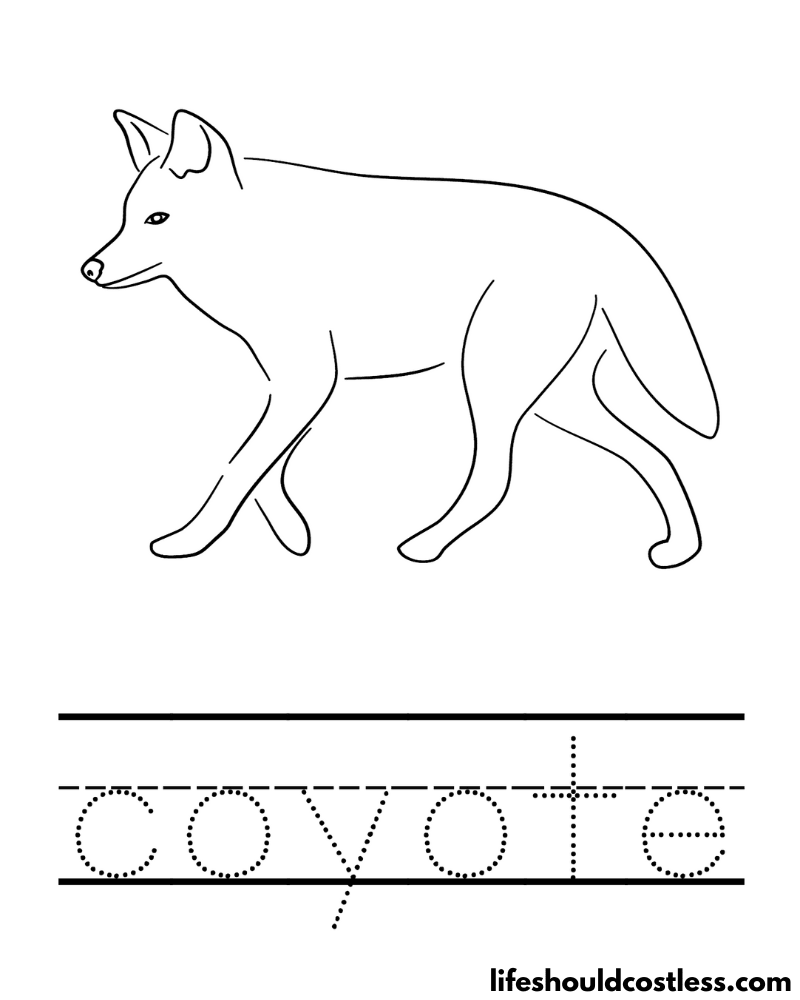
Various coyote designs
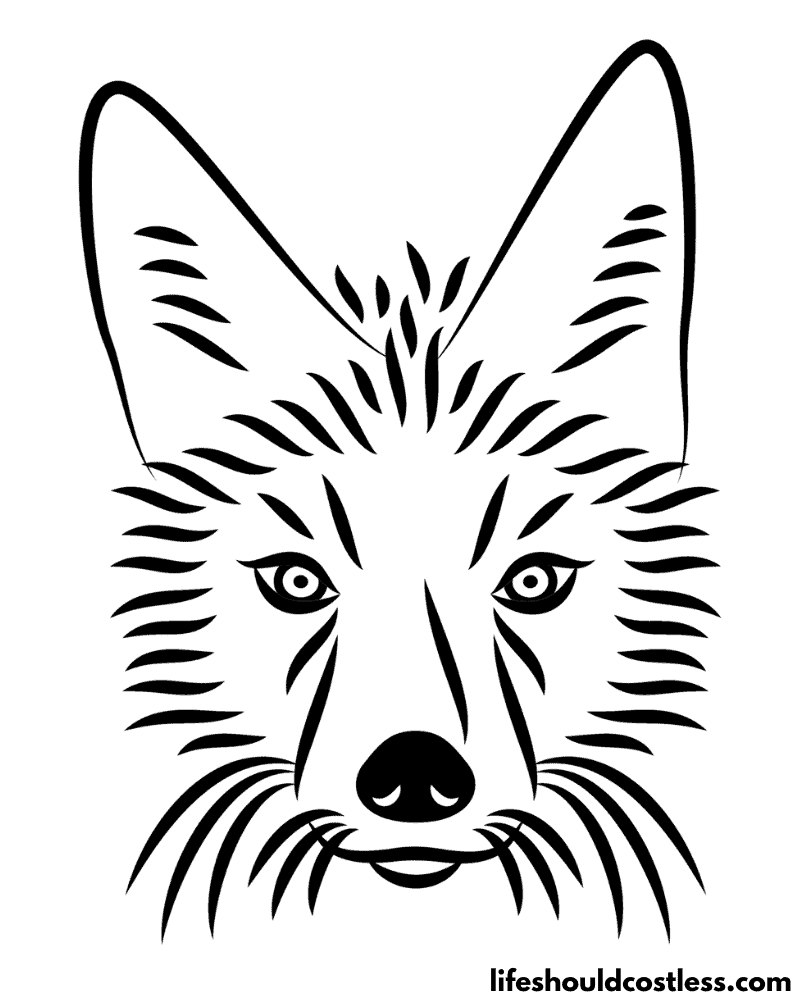
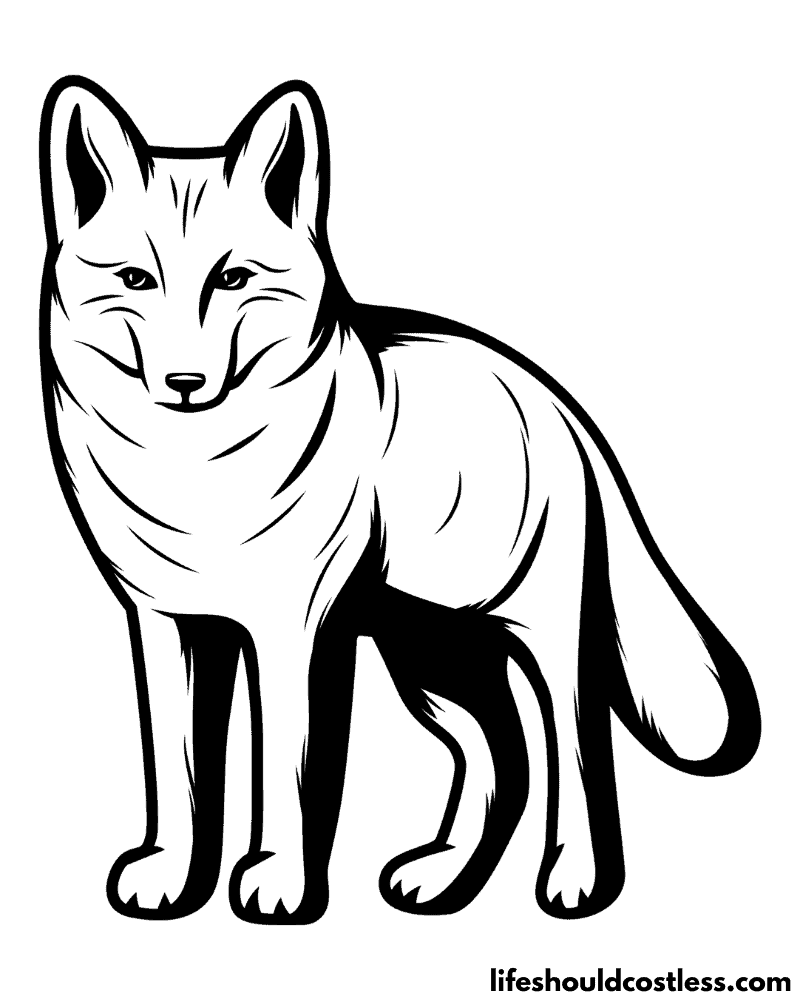
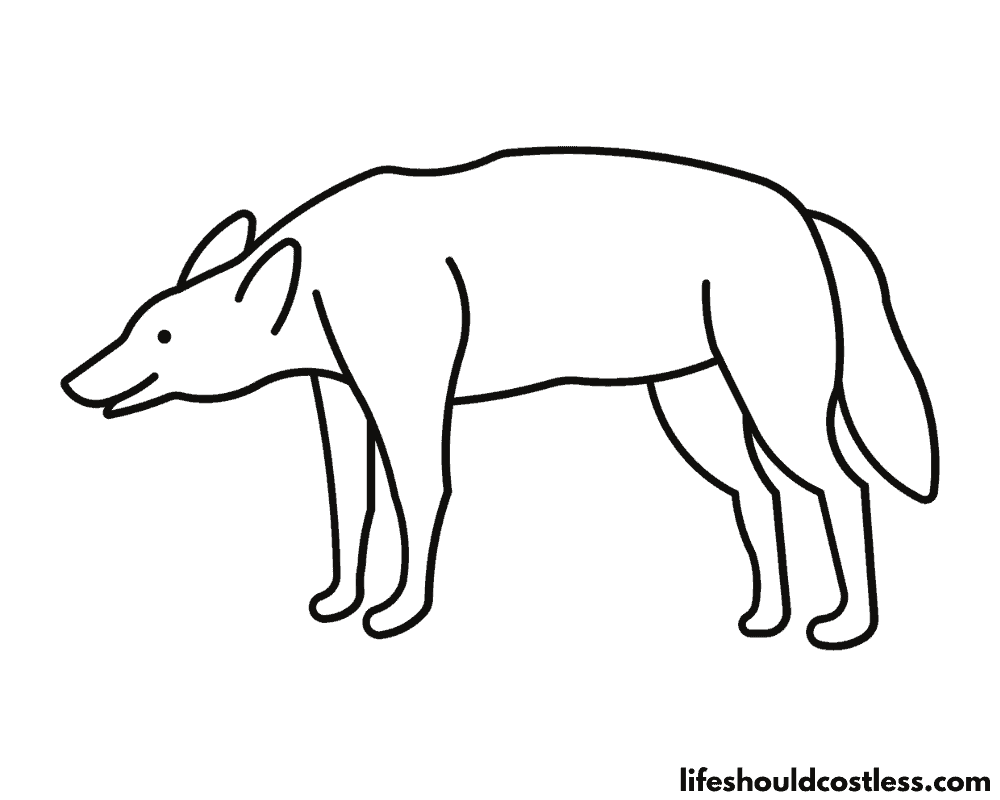
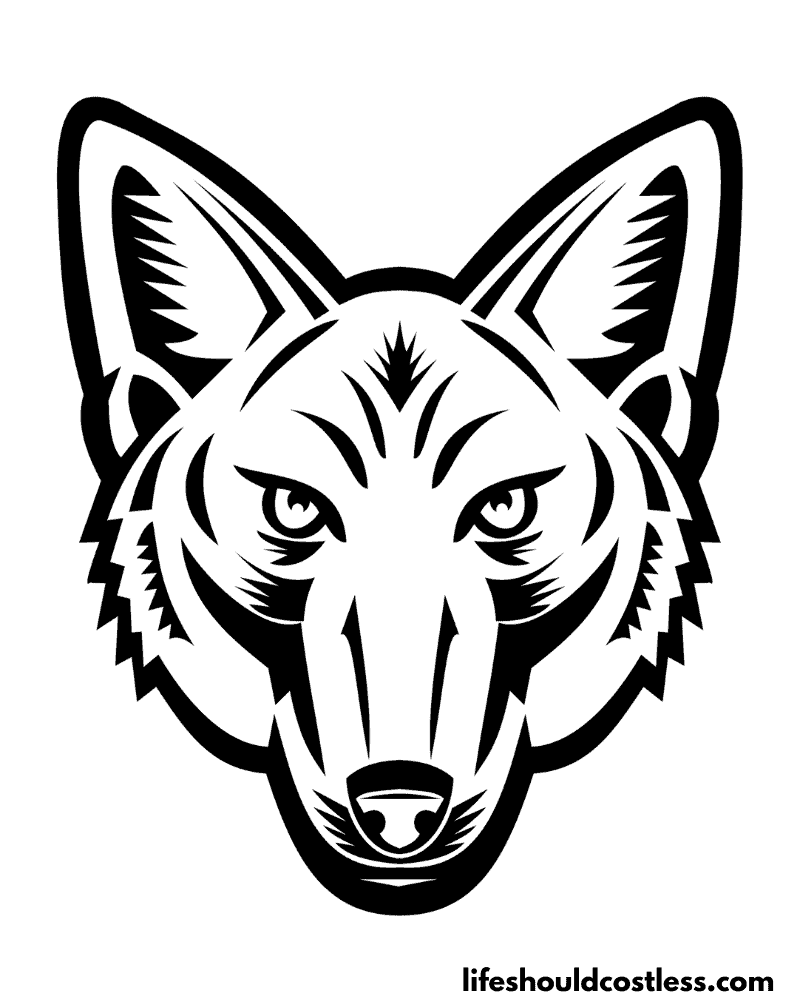
FAQ’s
Coyotes typically have fur that is grayish-brown or a reddish-brown color, which can vary depending on the individual and their geographic location.
They often have a mixture of lighter and darker shades in their fur, creating a mottled or grizzled appearance.
In some cases, coyotes may have white or cream-colored fur on their throats, bellies, and the underside of their tails.
This variation in fur color helps them blend into their surroundings and provides camouflage in their natural habitats.
Keep in mind that the exact coloration can vary among individual coyotes and populations.
*I will add more coyote colour / color questions and answers as the questions get sent to me.
Conclusion
In the domain of art and creativity, the coyote coloring pages explored in this article have served as a gateway to the captivating world of these intelligent and adaptable creatures.
As we conclude our journey through the pages of imagination, we’ve discovered that coloring a coyote is more than just an artistic endeavor; it’s an opportunity to connect with the wild, to learn about nature, and to appreciate the intricate beauty of North America’s iconic canines.
From the choice of colors that mimic the real-life coyote’s earthy tones to the techniques that bring their fur to life with texture and depth, each stroke of the coloring pencil has allowed us to engage with nature in a unique way.
Whether you’re a dedicated artist, an educator seeking a teaching tool, or simply someone looking for a moment of relaxation, these coloring pages have offered a canvas for exploration.
But the story doesn’t end here. The inspiration drawn from these pages can extend beyond coloring, sparking an interest in the natural world, wildlife conservation, and the remarkable adaptability of coyotes.
These pages can serve as a reminder of the wonders of the wild and our responsibility to protect and preserve it.
As we put down our coloring tools and contemplate the beauty we’ve created, let us also remember the importance of the coyote in our ecosystems and our cultural heritage.
They are more than just subjects of art; they are a testament to the resilience of nature and a symbol of our connection to the wild.
So, whether you’re framing your finished artwork, sharing it with friends and family, or simply enjoying the process, may these coyote-themed coloring sheets continue to inspire and remind us of the wonders that surround us in the natural world.
I want to express my heartfelt gratitude for visiting my blog and for your ongoing support in my mission to enhance people’s lives, make things easier, and promote affordability.
If you enjoyed this post or found it beneficial in any way, please consider sharing it with your family, friends, and colleagues through social media or by sending them the direct link via email.
Your support means the world to me, and I genuinely appreciate your efforts in helping this single mama support my family.
With sincere thanks, Sarah
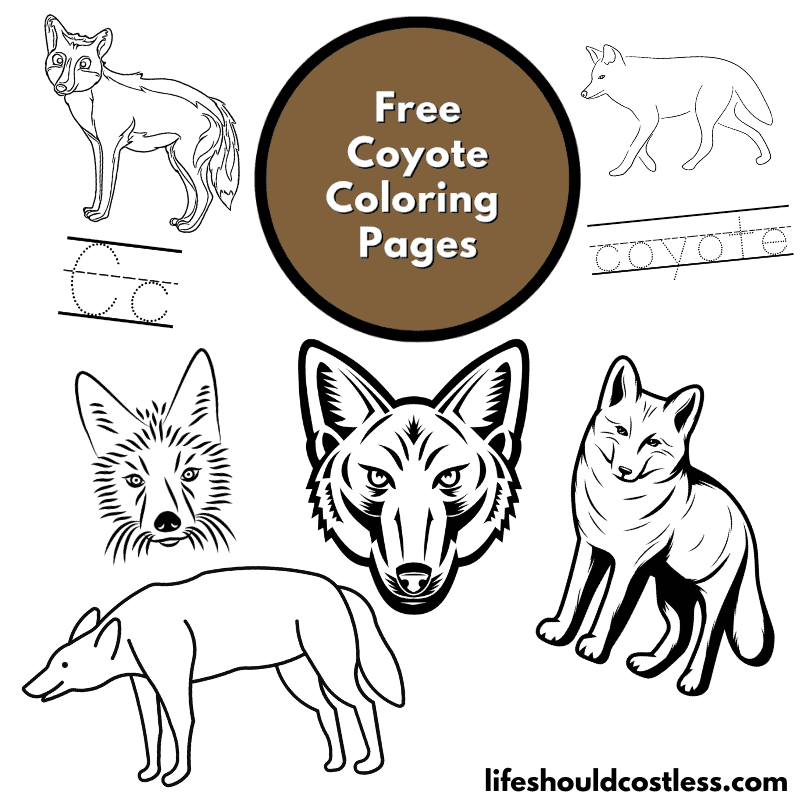
How to follow & support this site
- If you would like to subscribe to my email list, go here.
- Make sure to follow along via social media, by going here.
- If you would like to learn how to really show your support to this site (at no cost to you), go here.
- If you would like to make a direct donation to the site, go here.
Check out my other free printables
- To see all of my free printables, go here.
- If you would like to see an alphabetized index of free printable coloring pages, go here!
- All of my animals coloring pages are found here.
- Or, my other mammals coloring pages can be found here.
Otherwise, here are direct links to several of my other related posts that you’re also going to love:
Animals / Mammals
Animals / Birds
Animals / Insects
Other good resources for a printable coyote
- https://www.coloringall.com/coloring-pages/coyote/
- http://www.getcoloringpages.com/coyote-coloring-pages
*This post was originally shared to this blog on 09/26/2023, and has since been updated to improve user experience, add video instruction, as well as to make it as shareable as possible across the social medias.
**Please note that I do try my hardest to provide factual, but easy to understand, information about each topic. If you notice a discrepancy in my coloring pages, facts, or see something that you deem “misinformation/incorrect” please make sure to notify me about it. I would prefer that you send me an email with a link to a more reputable resource on that subject, so that I can correct it as soon as possible. Thanks so much for helping this site become the best that it can be!
***Resources from djinkers were used in the production of this article.
